Why Executive Presence and Leadership Impact Matter
What makes a leader unforgettable? Why do some executives inspire trust and drive results the moment they enter a room, while others, despite technical expertise, struggle to make an impression? The answer lies in the powerful combination of executive presence and leadership impact. These are not just buzzwords; they are the foundation of influence, credibility, and advancement. In today’s rapidly evolving business landscape, the new rules of executive presence emphasize authenticity, adaptability, and neuroscience-backed self-awareness as essential qualities for influential leaders.
You’re probably asking yourself, what does executive presence mean? The capacity to project confidence, credibility, and connection in high-stakes situations is essential for anyone aiming to lead and inspire others.. Leadership influence refers to the measurable impact a leader has on their team, organization, and culture. Neuroscience reveals that both are deeply rooted in the way our brains perceive, process, and respond to social cues. When you master executive presence and leadership impact, you unlock new levels of influence, trust, and organizational success.

Defining Executive Presence and Leadership Impact
Executive dominance is often described as gravitas, charisma, or polish, but it’s much more than a mysterious “it” factor. At its core, it is a collection of observable, learnable behaviors that send a clear signal: you are a leader worth following. This presence is evident in the way someone enters a room, engages in conversation, or navigates a challenging situation. It’s evident in their posture, the steadiness of their voice, their ability to listen deeply, and the calm confidence they project even under pressure.
Leadership reach, meanwhile, refers to the tangible, lasting impact a leader has on their team, organization, and broader community. It’s not just about immediate results or short-term wins. Actual impact is reflected in how a leader shapes the organizational culture, influences decision-making, and inspires others to strive for greater heights. It’s seen in the trust they build, the innovation they spark, and the resilience their teams demonstrate during times of uncertainty.
While some may assume these qualities are innate, neuroscience and leadership research show that both presence and impact can be developed. For example, the ability to regulate emotions, maintain composure, and project confidence is all linked to specific neural pathways in the brain. Leaders who understand and intentionally strengthen these pathways can cultivate the behaviors that others instinctively recognize as executive presence.
Moreover, leadership footprint is not a static achievement. It is sustained and amplified by a leader’s ongoing commitment to personal growth, emotional intelligence, and authentic connection with others. The most influential leaders are those who continuously refine their approach, seek feedback, and adapt to the evolving needs of their teams and organizations.
Ultimately, the intersection of presence and impact defines the most effective leaders. It is where credibility meets inspiration, and where inner confidence translates into outward influence. By understanding the science behind these qualities, anyone can begin to develop the skills necessary to lead with greater authority, authenticity, and lasting effect.
The Neuroscience of Executive Presence and Leadership Effect
Executive presence is often described with words like gravitas, charisma, or polish, but it’s far more than just a mysterious “it” factor. At its heart, executive presence is a set of specific, learnable behaviors that signal to others: this is a leader who can be trusted and followed. You can see this presence in the way someone enters a room with quiet confidence, how they engage in conversation with genuine interest, and how they maintain their composure when faced with challenging situations. It’s visible in their upright posture, the steadiness of their voice, their willingness to listen, and the sense of calm they bring, even under pressure.
Leadership impact, on the other hand, refers to the real, lasting effect that a leader has on their team, organization, and even the broader community. It’s not just about quick wins or short-term achievements. Actual leadership legacy is measured by how a leader shapes the culture around them, how they guide essential decisions, and how they inspire others to strive for higher goals. You can see this impact in the trust they build, the new ideas they encourage, and the way their teams stay intense and focused during challenging times.
Some people believe that these qualities are something you’re born with, but neuroscience and modern leadership research prove otherwise. The ability to manage your emotions, stay composed, and project confidence is closely tied to how your brain works. Specific neural pathways in the brain help leaders regulate stress, remain focused, and respond thoughtfully rather than react impulsively. By understanding and intentionally strengthening these pathways, anyone can develop the behaviors that others naturally recognize as executive presence.
Leadership impact is not a one-time accomplishment—it’s something that grows over time. The best leaders are always learning, seeking feedback, and adapting to new situations. They invest in their growth, develop emotional intelligence, and foster genuine connections with the people they lead. Their influence endures because they continually improve themselves and their surroundings.
Ultimately, the most effective leaders are those who effectively combine presence and impact. They earn credibility through their actions and inspire others through their vision and authenticity. When you understand the science behind these qualities and practice them intentionally, you can develop the skills necessary to lead with confidence, integrity, and a lasting impact.

Evolutionary Roots: Why Presence Signals Leadership
From an evolutionary perspective, executive presence and leadership impact tap into ancient brain circuits that evolved to quickly assess who is safe, who is competent, and who should lead. Our brains are wired to follow those who project calm, confidence, and clarity—traits that signal a leader who can guide the group through uncertainty. This “neural shortcut” means presence and impact are often judged before a word is spoken, making nonverbal communication and emotional regulation critical.
The Psychology of Influence and Trust
The true art of making an impression in the business world lies in one’s ability to influence and inspire those around them. This isn’t simply about having a commanding voice or an impressive resume; it’s about the subtle signals you convey through your actions, consistency, and emotional awareness. People naturally gravitate toward those who exude authenticity and demonstrate a genuine connection with others, especially in high-stakes environments where trust is paramount.
Recent psychological studies reveal that when your behavior consistently matches your words, you trigger positive responses in the brains of colleagues and stakeholders. This alignment activates neural pathways associated with reward and openness, making others more likely to embrace your ideas and follow your direction. As this sense of trust grows, your ability to shape outcomes and drive momentum within a team or organization multiplies. The result is a powerful ripple effect—one that not only elevates individual performance but also transforms the entire workplace culture, setting the stage for long-term achievement and collective success.
Organizational Culture: The Ripple Effect of Leadership Impact
Executive presence doesn’t just impact individuals—it shapes teams and organizational culture. Leaders with a strong corporate presence and leadership create psychological safety, encouraging open communication, innovation, and risk-taking. Their presence permeates the organization, establishing standards for how others behave, interact, and perform. In times of crisis, decision-makers’ poise and leadership contribution become even more vital, as teams look to leaders for cues on how to respond.

The Science of First Impressions
Research from Stanford and Harvard shows that listeners evaluate a leader’s credibility within the first 7–30 seconds of an interaction, often before consciously processing the content. This means that executive presence and leadership are established almost instantly, driven by subtle cues such as posture, facial expression, and vocal tone. These signals are processed in the limbic system, the brain’s emotional hub, influencing how others feel about you long before they analyze your message.
Emotional Regulation: The Core of Executive Presence
One of the most potent aspects of managerial presence is the ability to regulate emotions under pressure. The amygdala can trigger “emotional hijacking” in high-stakes moments, leading to reactive or defensive behaviors that undermine authority and leadership impact. Leaders who practice emotional regulation—through techniques such as mindful breathing, grounding, and positive visualization—activate the prefrontal cortex, thereby maintaining composure and clarity even in challenging situations.
Mirror Neurons and Empathy: Building Connection
Empathy is a cornerstone of executive presence and leadership impact. Mirror neurons allow us to “read” the emotions and intentions of others, creating a sense of connection and trust. Leaders who actively listen, acknowledge others’ perspectives, and respond with empathy foster engagement and loyalty. This neural resonance is why authentic presence feels magnetic—it aligns the brain states of the leader and follower, thereby multiplying the leadership value.
Nonverbal Communication: The Silent Language of Leadership
Up to 93% of communication is nonverbal. Body language, eye contact, gestures, and vocal tone all contribute to executive presence and leadership imprint. Open posture, steady gaze, and controlled movement signal confidence and authority, while fidgeting or closed body language can erode credibility. Leaders who master nonverbal cues can project presence and impact even before they speak.
Authenticity: The Neuroscience of Trust and Influence
Authenticity is not just a buzzword—it’s a neural imperative. When a leader’s words and actions align, the brains of followers register safety and trust. In contrast, inauthenticity triggers the limbic system’s alarm bells, leading to disengagement or resistance. Leaders who embrace their true selves, acknowledge vulnerability, and communicate transparently create a culture of trust and psychological safety, amplifying their leadership impact.
The Feedback Loop: Presence, Perception, and Impact
Executive presence encompasses both internal and external aspects of an individual’s presence. The way you perceive yourself shapes your behavior, which in turn shapes how others perceive you. This feedback loop is reinforced by the brain’s reward system: positive feedback and successful interactions strengthen neural pathways for confidence and presence, making these traits—and your leadership engagement—more automatic over time.

Executive presence and leadership impact are built on competence, ethics, and continuous professional growth.
Brain-Based Strategies to Enhance Gravitas and Leadership Impact
How can you leverage neuroscience to strengthen your senior-level credibility and leadership ability? Here are actionable, brain-based strategies I use in my neuropsychology practice:
1. Emotional Regulation:
Practice mindful breathing and visualization to calm the amygdala and activate the prefrontal cortex. This helps you stay composed and project confidence under pressure, enhancing your leadership approach.
2. Self-Awareness:
Use reflection and feedback to align your internal intentions with external perceptions. Understanding how others perceive you enhances authenticity and credibility, which are key to executive presence.
3. Empathy and Connection:
Tune into others’ emotions using active listening and mirroring techniques. This activates mirror neurons, building rapport and influence, and deepening your leadership capabilities.
4. Nonverbal Mastery:
Be intentional with your body language, facial expressions, and vocal tone. Practice open gestures, maintain steady eye contact, and exhibit controlled movement to convey authority and presence.
5. Growth Mindset:
Commit to continuous learning and self-development. The brain’s plasticity means you can continually refine your executive presence and leadership impact through practice and feedback.
Client Case Study: Elevating Executive Presence and Leadership Impact
One of my clients, whom I’ll call Daniel, was a talented executive with deep expertise but struggled to command attention in board meetings. Despite his knowledge, he often felt overlooked, his ideas dismissed. Daniel’s self-perception was clouded by anxiety and self-doubt, leading to closed body language and a hesitant voice, diminishing his influential presence and leadership footprint.
In our coaching sessions, we focused on the neuroscience of executive presence and its impact on leadership. I guided Daniel through visualization exercises to rehearse confident presentations, taught him mindful breathing to regulate his stress response, and used video feedback to fine-tune his nonverbal cues. We also worked on reframing his internal dialogue, shifting from self-criticism to self-assurance.
Over several months, Daniel’s transformation was remarkable. He began to speak with clarity and conviction, his posture open and grounded. Colleagues started to seek out his input, and he was soon tapped for a high-profile leadership role. Daniel’s journey illustrates that boardroom confidence and leadership are not innate—they are skills that can be developed through targeted, brain-based strategies.
Real-World Examples: Executive Presence and Leadership Impact in Action
Consider Satya Nadella’s transformation of Microsoft. When he became CEO, Nadella prioritized empathy, cooperation, and a growth mindset—core elements of executive presence and leadership effectiveness. His authentic leadership style reinvigorated Microsoft’s culture, driving innovation and business results. Similarly, leaders who remain composed and precise during crises, such as hospital CEOs during public health emergencies, inspire confidence and guide organizations through uncertainty, thereby amplifying their leadership significance.
Organizational Transformation: The Ripple Effect of Presence
Leaders with exceptional professional gravitas and leadership acumen create cascading effects throughout their organizations. Psychological safety increases, innovation accelerates, decision-making improves, and talent retention strengthens. Influence and effectiveness are not just about individual advancement—they shape the culture and outcomes of entire organizations.

Avoiding the Most Common Leadership Impact Pitfalls
Even the most experienced professionals can fall into traps that undermine their influence and effectiveness. One frequent misstep is inconsistency between what is said and what is shown through body language. When there’s a mismatch between words and nonverbal cues, people quickly pick up on it, which can erode trust and make others question your intentions. It’s essential to remember that your message is not just about what you say, but also how you convey it—tone of voice, eye contact, and posture all play a crucial role in how your communication is perceived.
Another common pitfall is using language that unintentionally weakens your authority. This can include hedging statements, apologizing unnecessarily, or speaking in a way that lacks conviction. These habits can make even the most knowledgeable leader seem uncertain or less credible. To avoid this, focus on clear, direct communication and practice speaking with confidence and purpose.
Leaders sometimes struggle to adapt their approach to different audiences. Failing to consider the unique perspectives, needs, and communication styles of others can lead to misunderstandings and missed opportunities for connection. The most effective communicators take the time to understand their audience, adjust their message, and ensure everyone feels included and valued.
Emotional reactivity under pressure is another challenge. Neuroscience reveals that when stress levels increase, the brain’s emotional centers can override rational thinking, leading to impulsive reactions or defensive behavior. This can damage relationships and undermine the sense of psychological safety within a team. Building self-awareness and practicing emotional regulation techniques—such as pausing before responding, taking deep breaths, or reflecting on feedback—can help leaders maintain composure and respond thoughtfully, even in high-stress situations.
Arrogance and reluctance to accept feedback are additional traps that can quietly erode influence. Overbearing self-assurance may come across as dismissive, while ignoring feedback can stifle growth and innovation. Leaders who actively seek diverse perspectives, listen with empathy, and acknowledge the contributions of others foster a culture of trust and continuous improvement.
Finally, a lack of clear vision and poor communication can leave teams feeling lost or disengaged. Effective leaders regularly share their vision, set clear expectations, and create open channels for dialogue. By making communication a two-way street and encouraging feedback, leaders ensure everyone is aligned and motivated to achieve shared goals.
The Future of Executive Presence and Leadership Impact: Virtual and Hybrid Work
In today’s rapidly evolving digital landscape, the ability to maintain a commanding presence and exert influence remotely has become a critical skill for anyone in a leadership role. Virtual and hybrid work settings challenge individuals to convey authenticity and build trust without the benefit of physical proximity. This shift demands heightened awareness of subtle communication cues, such as vocal inflection, eye contact through the camera, and deliberate facial expressions—elements neuroscientific research shows are essential for social connection and emotional resonance.
Leaders with executive presence must also master emotional regulation to manage the unique stressors of remote work, including digital fatigue and the absence of immediate feedback. Neuroscience highlights the importance of activating the prefrontal cortex to maintain focus and composure, enabling thoughtful responses rather than impulsive reactions during virtual interactions.
Moreover, the asynchronous nature of hybrid work requires a new level of intentionality in communication. Clarity and consistency are more important than ever to prevent misunderstandings and maintain team alignment. The brain’s mirror neuron system, which facilitates empathy and social bonding, can be less engaged in virtual settings, making it vital for leaders to compensate by explicitly expressing empathy and encouragement.
Adapting to these new norms involves leveraging technology mindfully, creating virtual rituals that foster team cohesion, and prioritizing psychological safety to sustain motivation and innovation. By integrating neuroscience-based strategies, leaders can not only preserve but also enhance their ability to connect and inspire, regardless of physical distance.
Ultimately, the future of effective leadership in virtual and hybrid environments hinges on blending technological savvy with emotional intelligence, creating meaningful interactions that drive engagement and performance.

Your Path to Executive Presence and Leadership Direction
Commanding aura and leadership impactfulness are not reserved for a select few; they are learnable, brain-based skills that can elevate your leadership and influence. Your journey to mastering these abilities begins with a powerful truth: they are dynamic qualities accessible to anyone willing to learn and grow. Neuroscience reveals that with intentional practice and targeted strategies, you can rewire your brain to consistently project confidence, authenticity, and influence in every interaction.
Whether you’re leading a team, presenting to stakeholders, or navigating change, executive presence and leadership impact are your most valuable assets. Picture yourself walking into any room—leading a pivotal meeting, presenting to key stakeholders, or guiding your team through uncertainty—with a presence so magnetic it commands respect and inspires trust. This is the transformative potential of professional charisma and leadership advancement, cultivated by understanding your brain’s mechanisms and learning how to leverage them for your advantage.
By embracing this science-backed approach, you unlock the ability not only to shape how others perceive you but also to deepen your self-awareness and self-belief, which will significantly improve your leadership presence. This dual transformation fuels a cycle of growth, resilience, and authentic leadership that elevates both your professional journey and your fulfillment.
If you’re ready to step into your full leadership potential, consider partnering with a neuropsychologist specializing in brain-based coaching. With the right tools and insights, you can transform not only how others see you but also how you see yourself.
#ExecutivePresence #LeadershipImpact #Neuroscience #Leadership #ProfessionalDevelopment #Influence #EmotionalIntelligence




